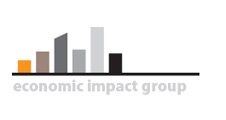Property Depreciation
LOCI™ uses three types of property for its property tax calculations: real (building and land), personal (furniture and equipment), and inventory (unless freeport eliminates taxes). Real and personal property have a “useful live” in years that’s used to determine depreciation schedules for each. Your county or city tax assessor can help you with how they determine depreciation for taxable property so you can determine the project’s real and personal property values over the time horizon your using, e.g., 10 or 20 years. Most of the time, you’ll find that a straight-line depreciation method is used, which is the easiest.
Straight-line depreciation is the simplest and most-often-used technique and the approach we recommend. You can create whatever depreciation schedule you want, but straight-line is easiest. This method expenses a portion of original cost in equal increments over the period. For example, if the building for the project has a useful life of 40 years and it costs $20,000,000 to construct it will depreciate at $500,000 per year: $20,000,000 / 40 years = $500,000 annual straight-line depreciation expense. Sometimes the tax assessor defines a “floor” value for the property. This is the minimum value the property can depreciate to for tax purposes.
TIP: Users can log in and access a spreadsheet example from the Downloads page for depreciating building and equipment/furnishings for use in a LOCI™ project profile. It provides you with a variety of options for depreciation and for how the abatement is calculated. The first tab holds the results which is where LOCI™ accesses the depreciated property values and abatement schedule for import into your project profile using the Import button in either the Monetary Incentives tab or any of the three Property Value pages under the Property Value tab.


